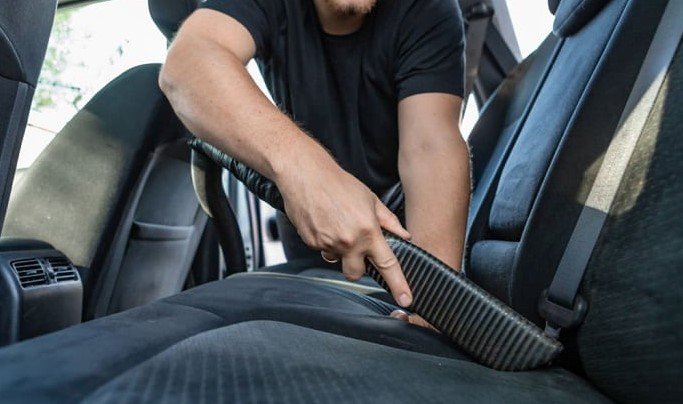Many of you may have faced the frustrating situation of discovering house paint splattered on your car. But fear not, as in this guide, we will show you how to effectively remove house paint from your car’s surface. By following these simple steps, you can restore your car’s paint job to its former glory without damaging the finish. With the right tools and techniques, you can tackle this common problem with confidence and skill. Let’s get started!
Key Takeaways:
- Act quickly: It is important to remove house paint from your car as soon as possible to prevent it from drying and becoming more difficult to remove.
- Use a clay bar: Clay bars can effectively remove paint without damaging the car’s finish. Make sure to follow the instructions carefully.
- Try a solvent: Solvents like rubbing alcohol or nail polish remover can help break down the paint, making it easier to remove from your car.
- Test in a small area: Before applying any product to the entire affected area, test it in a small, inconspicuous spot to ensure that it does not damage the car’s paint.
- Seek professional help if needed: If you are unsure about removing house paint from your car on your own, it is best to seek the help of a professional detailer to avoid causing any damage to your vehicle.
Factors to Consider Before Removing House Paint from Car
Your car is your pride and joy, so it’s important to consider a few key factors before attempting to remove house paint from its surface. Recognizing these factors will help ensure a successful and damage-free paint removal process.
Type of Paint
While removing house paint from a car, one of the first factors to consider is the type of paint that was used. Different types of paint may require different removal methods to avoid damaging the car’s original paint. It’s important to identify whether the house paint is oil-based or water-based before proceeding with any removal techniques.
Painted Surface
While considering the painted surface, you should assess the condition of the car’s original paint. If the car’s paint is old, faded, or already damaged, you may need to take extra precautions during the removal process to prevent further harm. Inspecting the painted surface will help you determine the best approach for removing the house paint without causing additional damage.
A gentle approach is crucial when dealing with delicate painted surfaces to avoid scratching or etching the original paint. Using mild products and tools specifically designed for car paint removal will help protect the underlying surface and ensure a successful outcome.

Time and Effort
While removing house paint from your car, you should also consider the amount of time and effort required for the removal process. Depending on the extent of the paint spill and the surface area affected, removing house paint from a car can be a time-consuming task that requires patience and precision. It’s important to allocate enough time and dedicate sufficient effort to ensure a thorough and effective removal.
Before starting the paint removal process, gather all the necessary tools and materials to streamline the task and avoid any delays. Having everything prepared in advance will help you approach the removal process efficiently and complete it successfully.
How-To Guide for Removing House Paint from a Car
Gather Necessary Supplies
On your journey to remove house paint from your car, you’ll need to gather a few necessary supplies. These include gloves, safety goggles, microfiber cloths, car wash soap, a clay bar kit, rubbing alcohol, a car buffer, and car wax. These items are necessary to ensure a safe and effective paint removal process.
Prep the Car
There’s no skipping this crucial step – before you begin removing the house paint from your car, you must thoroughly clean and prep the surface. Start by washing the car with car wash soap and water to remove any dirt or debris. Then, use a clay bar kit to gently remove any contaminants on the paint surface. This step is necessary for ensuring that the paint removal process goes smoothly.
With a clean and prepped surface, you are now ready to tackle the task of removing the house paint from your car.
Choose the Right Method
Guide yourself towards the right method of paint removal based on the extent of the paint damage. For light paint transfer or water-based paint, you can try using rubbing alcohol or a mild paint cleaner with a microfiber cloth. If the paint is more stubborn, you may need to use a car buffer with a polishing compound. Remember to work in small sections and take your time for the best results.
Understanding the nature of the house paint on your car will help you determine the most appropriate method for removing it effectively.
Test a Small Area First
One crucial step in the paint removal process is to test a small, inconspicuous area of your car first. This will help you determine how the paint surface reacts to the removal method you’ve chosen. It’s important to ensure that the method you use does not damage or strip the car’s original paint job.
Right before you investigate the full paint removal process, take the time to test a small area and adjust your method if needed.
Remove the Paint
Methodically start removing the house paint from your car using the chosen method. Work in small sections, applying the paint removal technique with a gentle hand. Remember to rinse the area frequently and check your progress to ensure you are not causing any damage to the car’s paint underneath.
Plus, don’t forget to apply car wax after the paint removal process to protect the newly exposed surface and restore your car’s shine.
Tips for Removing House Paint from Car
Now, when it comes to removing house paint from your car, there are a few key tips that can help make the process easier and more effective.
Work in a Well-Ventilated Area
- Some chemicals and paint removers can have strong fumes that can be harmful if inhaled. Make sure to work in a well-ventilated area, such as outdoors or in a garage with the doors open, to minimize exposure to these fumes.
- Recognizing the importance of good ventilation can help ensure your safety while working on removing the house paint from your car.
Wear Protective Gear
- From gloves to safety goggles, wearing the right protective gear is crucial when dealing with paint removal chemicals. Protecting your skin, eyes, and lungs from potential harm is imperative for a safe and successful paint removal process.
- Paint removal chemicals can be harsh and abrasive, so taking the necessary precautions with protective gear is key to keeping yourself safe during the removal process.
Be Patient and Gentle
- From being patient during the soaking process to gently scrubbing off the paint, it’s important to approach the paint removal process with care and precision. Rushing or using excessive force can potentially damage your car’s surface, so take your time and work methodically.
- Plus, being patient and gentle during the paint removal process can help ensure that you achieve the best results without causing any additional damage to your car’s exterior.
Summing up
With this in mind, you now have a simple and effective guide to help you remove house paint from your car. Remember to act quickly and use the right materials and techniques to avoid damaging your car’s paint job. By following the steps outlined in this guide, you can restore your car’s appearance and avoid costly repairs.
It’s important to remain patient and thorough during the process, taking care to protect your car’s surface while working to remove the paint. By staying focused and following these steps, you can successfully remove house paint from your car and keep it looking great for years to come.
FAQ
Q: What are the common methods for removing house paint from a car?
A: The common methods for removing house paint from a car include using rubbing alcohol, nail polish remover, paint thinner, clay bar, and polish or compound.
Q: Is it safe to use rubbing alcohol to remove house paint from a car?
A: Yes, rubbing alcohol is safe to use on car surfaces. It is an effective solvent that can help break down and remove house paint without damaging the car’s paint job.
Q: Can nail polish remover be used to remove house paint from a car?
A: Nail polish remover can be used to remove house paint from a car, but it should be used with caution as it can be harsh on car paint. Test a small area first and ensure it is safe for your car’s paint before using it extensively.
Q: How can I prevent damage to my car’s paint while removing house paint?
A: To prevent damage to your car’s paint while removing house paint, be gentle and patient during the process. Use gentle rubbing motions and avoid using abrasive materials or excessive force that could scratch or damage the car’s paint job.
Q: Can I remove house paint from my car’s surface without professional help?
A: Yes, you can remove house paint from your car’s surface without professional help by following a simple and effective guide. With the right materials and techniques, you can safely and effectively remove house paint from your car at home.















